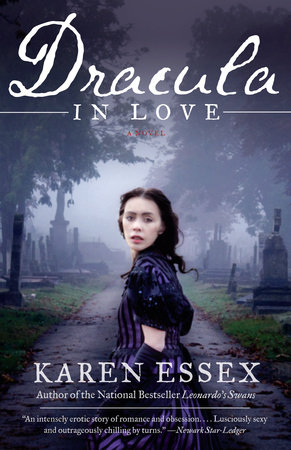Dracula in Love Reader’s Guide
By Karen Essex


1. In the prologue, Mina Murray writes, “The truth is we must fear monsters less and be warier of our own kind.” What “monsters” evoke fear in the book? Which humans evoke fear?
2. How does feminism play into Mina’s choices? Miss Hadley’s? Lucy’s? Kate’s? How are these women similar? Which of the women do you ultimately consider more liberated?
3. How does Mina evolve throughout the story? What changes her? Where does she get her true power? Do you agree with her choices?
4. In some ways, the book is an exploration of free will versus fate. Are there any victims in the story, and why are they victims? To what or whom are they victims? Do you believe what Dracula says, that a person cannot be made to do something s/he has not chosen on some level?
5. Did Dracula in Love deepen your understanding of the roots of vampirism?
6. Discuss the different elements of vampire folklore in the book (i.e. The Lamia, the story of Lilith, the Sidhe, the ghost tales of Whitby) and the ways in which they have contributed to modern day vampire myths.
7. Victorian ideology and customs are strongly painted in the book. In what ways, does Mina accept them and give in to them? In what ways, does she reject them?
8. How do the vampires differ from vampires in other vampire books, films, and television shows, whether classic or contemporary?
9. Discuss sexuality as it pertains to different characters in the book. (Mina and Jonathan. Mina and the Count. Lucy and Arthur. Lucy and Morris. Mina and John Seward. Jonathan and the Lamia.)
10. What symptoms and behaviors deemed a patient “insane” in Lindenwood? How does the characterization of the insane relate to Victorian ideology?
11. In what ways does Dracula in Love reflect the Victorian obsession with Darwin’s theory of evolution and other scientific and medical advancements of the time? What 20th century events does it foreshadow?
12. What are the most poignant ways in which Dracula in Love differs from Bram Stoker’s Dracula? Do you find one account more credible than the other?
(For a complete list of available reading group guides, and to sign up for the Reading Group Center enewsletter, visit www.readinggroupcenter.com)
Just for joining you’ll get personalized recommendations on your dashboard daily and features only for members.
Find Out More Join Now Sign In